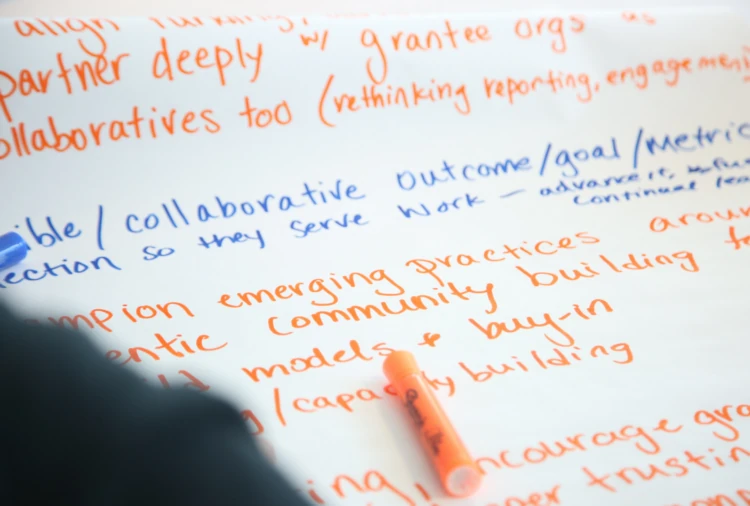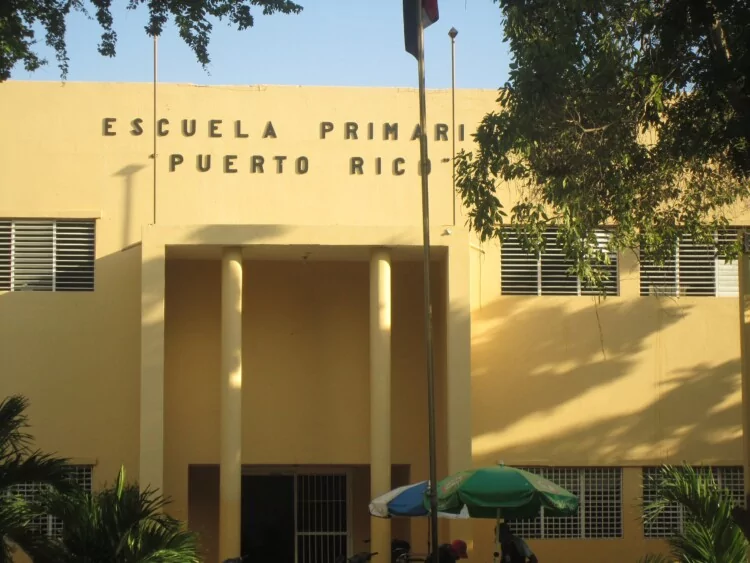As a general pediatrician and child health services researcher, I care for a vulnerable population of children, many of whom have been exposed to violence. I have also spent the past 12 years examining the impact of intimate partner violence (IPV) on child health and well-being, and determining innovative primary care strategies to address psychosocial adversity. One year ago, I began a William T. Grant Distinguished Fellowship to improve my ability to conduct research that is used by practitioners and policymakers to reduce children’s exposure to violence.
Children’s exposure to violence is a public health crisis. The recent National Survey of Children’s Exposure to Violence reported that approximately 60 percent of children in the United States were exposed within the past year, with more than one-third of children subject to multiple victimizations. Children exposed to violence have higher rates than non-exposed peers of depression, anxiety, poor self-esteem, aggression, poor peer relations, and poor school performance. My past research also documents the adverse effects of childhood IPV exposure on physical health. Given these profound consequences, there is an acute need for feasible interventions that can be easily disseminated and implemented, as well as policies that better support families who experience violence.
While there is no shortage of high-quality research related to childhood exposure to violence, just a fraction of it makes its way into the hands of the practitioners who implement programs and the policymakers who support these projects. Prior to starting my Fellowship, I had many questions. What are the most important factors shaping the development and implementation of community-based childhood violence prevention programs? How do policymakers prioritize decisions, funding, and support for policies related to children exposed to violence? My Fellowship, which began in 2013, gave me the opportunity to explore the answers to these and other questions.
While there is no shortage of high-quality research related to childhood exposure to violence, just a fraction of it makes its way into the hands of the practitioners who implement programs and the policymakers who support these projects.
For my Fellowship, I partnered with Futures Without Violence (FUTURES), one of the largest nonprofit violence prevention groups in the US. In its 35 years of existence, FUTURES has established both broad and deep connections with diverse practitioners and policymakers, and serves as a liaison for the common goal of preventing family violence. The group also provides technical assistance to former Attorney General Eric Holder’s Defending Childhood Initiative (DCI), launched in 2010. The DCI sites—community-based organizations that serve children and families—were tasked with developing comprehensive systems to prevent children’s exposure to violence and to work collaboratively to respond after exposure has occurred. Therefore, over the course of my Fellowship, I have been able to spend time both at Futures and with DCI site-based leaders. These experiences have allowed me to explore how practitioners build cross-agency collaborations, as well as how and under what conditions research evidence is used.
I quickly realized the complexity of mobilizing communities to come together for change. Communities that are awarded DCI grants are charged with uniting across disciplines (e.g., education, justice, health) to reduce children’s exposure to violence. This effort is complicated, requiring recognition of the distinct priorities, cultures, and perceived needs of each discipline. Community providers explained that the first step in building violence prevention programs involves finding willing champions across disciplines, and building trust and common understanding of the problem. The key stakeholders must then find solutions that meet their groups’ needs and that fit within the communities’ structures. These solutions sometimes arise from local policy changes (e.g., one DCI site changed local policy related to gang activity), while others begin to build programs. In program building, the sense of urgency and need to balance multiple perspectives can sometimes be at odds with careful examination of the evidence.
I quickly realized the complexity of mobilizing communities to come together for change.
I have observed three additional areas that limit the use of research evidence. First, information about existing evidence-based practices/interventions is not readily available to communities. While community-based providers commonly use research evidence to describe the problem (e.g., prevalence of children’s violence exposure, or the impact of violence on children’s health and well-being), the “evidence” with regard to best practices and effective interventions seems to be harder to access and integrate. Community-based providers often do not have access to the evidence base; they explain that they have very limited access to academic journals, for instance. Second, even when the evidence is accessible, these practices/interventions are often not readily adaptable. Practitioners have emphasized that evidence-based therapies are generally not designed with dissemination and reproducibility in mind. One DCI provider described the struggle to implement evidence-based teen dating violence prevention curricula into local schools. The existing evidence-based programs were tested with primarily upper–middle-class white students, and the associated materials (e.g., cases and videos) did not feel relevant or relatable to students of color in an urban environment. In addition to these challenges, even if practitioners decide to implement an evidence-based program, they may be stymied because of the significant cost of obtaining program materials and appropriately training staff.
Third, while I had a vague awareness of it before my Fellowship, I have been surprised at the level of separation that exists between community practitioners and researchers, despite a strong desire to work together. For instance, practitioners are often required to collect data, which can be onerous without a research background. Similarly, providers are often required to collect data to ensure continued funding, but many find it difficult to determine which data would best demonstrate to policymakers their program’s effectiveness. Some aspects of researcher–provider partnerships can be challenging: providers may feel “judged” based on selection of evidence-based models (or not), and the pace of research (i.e., the time between data collection and eventual publication) may not be fast enough for providers to use it effectively. Even when practitioners and researchers would like to collaborate, there are not many avenues to foster engagement and build long-term relationships.
I am committed to principles of social justice, and to providing care, not to only to the child, but to the whole family unit.
In Boston, DCI staff have tried to better integrate evidence-based practices into childcare settings using a Breakthrough Series Collaborative, a methodology that involves both researchers and practitioners. The concept of the Breakthrough Series was developed by the Institute for Healthcare Improvement, which noted that established evidence about systems improvement is not often used by organizations or providers. The goal of the Collaborative is for organizations to make evidence-based systems-level change under the guidance of topical experts. Each participant organization outlines areas that they would like to change and then conducts Plan-Do-Study-Act (PDSA) cycles within their organization. They then come together for learning sessions in which faculty use existing evidence to help guide the PDSA process. The focus of the childcare sites is to implement trauma-informed practices. This methodology holds promise as a means by which to make evidence-based practice easily accessible to community-based practitioners.
Of the many fields of medicine, I chose pediatrics because I firmly believe that promoting the health of young people is essential to improving society as a whole. I am committed to principles of social justice, and to providing care, not to only to the child, but to the whole family unit. I entered into a research career focused on exposure to childhood violence with the hope that the work that I did would be useful to practitioners, researchers, and policymakers alike, and that I could help play a role in improving the lives of children living in violent situations. I am now mindful of receiving input from providers and participants who are on-the-ground from the outset. For research to be truly effective, it must represent a collaborative partnership, such that the programs being tested are grounded in communities’ needs, and are designed to be both sustainable and adaptable. My time as a William T. Grant Distinguished Fellow has given me the unique opportunity to take part in conversations outside of my usual sphere, giving me valuable insight that will be reflected in my approach to my future work as a researcher.





